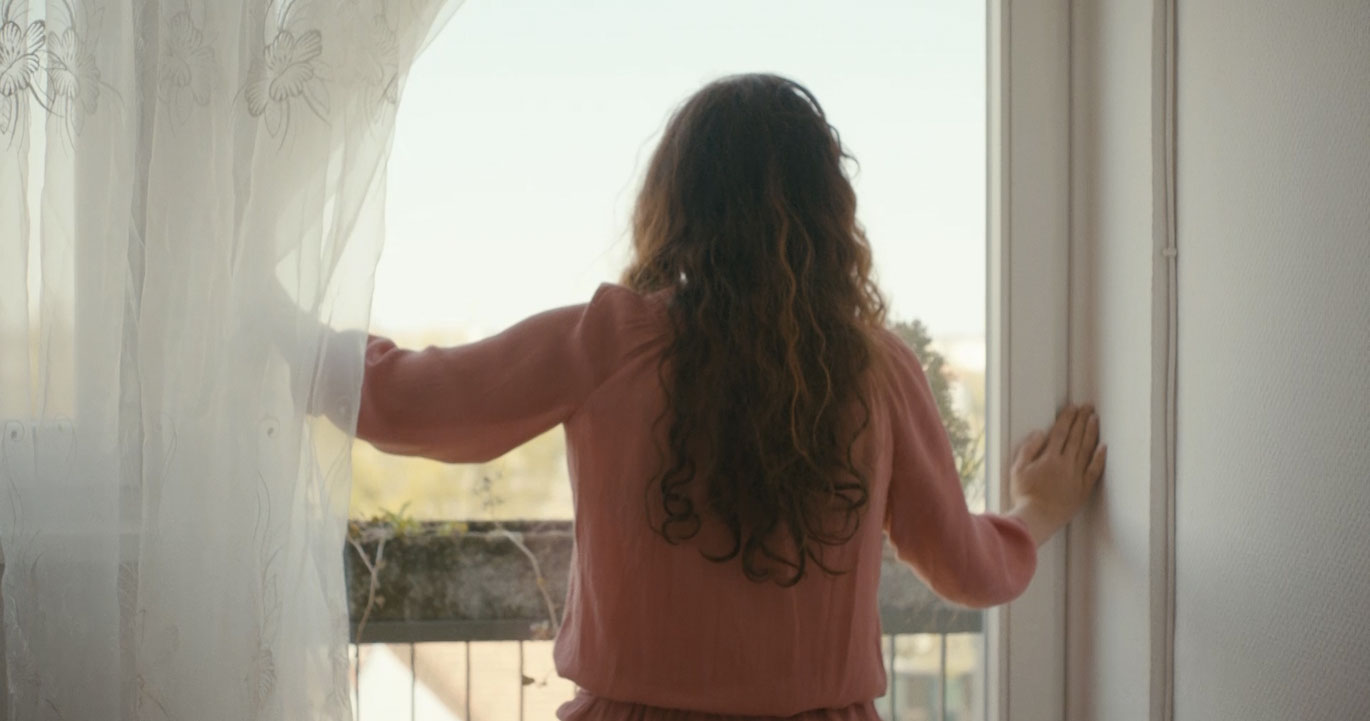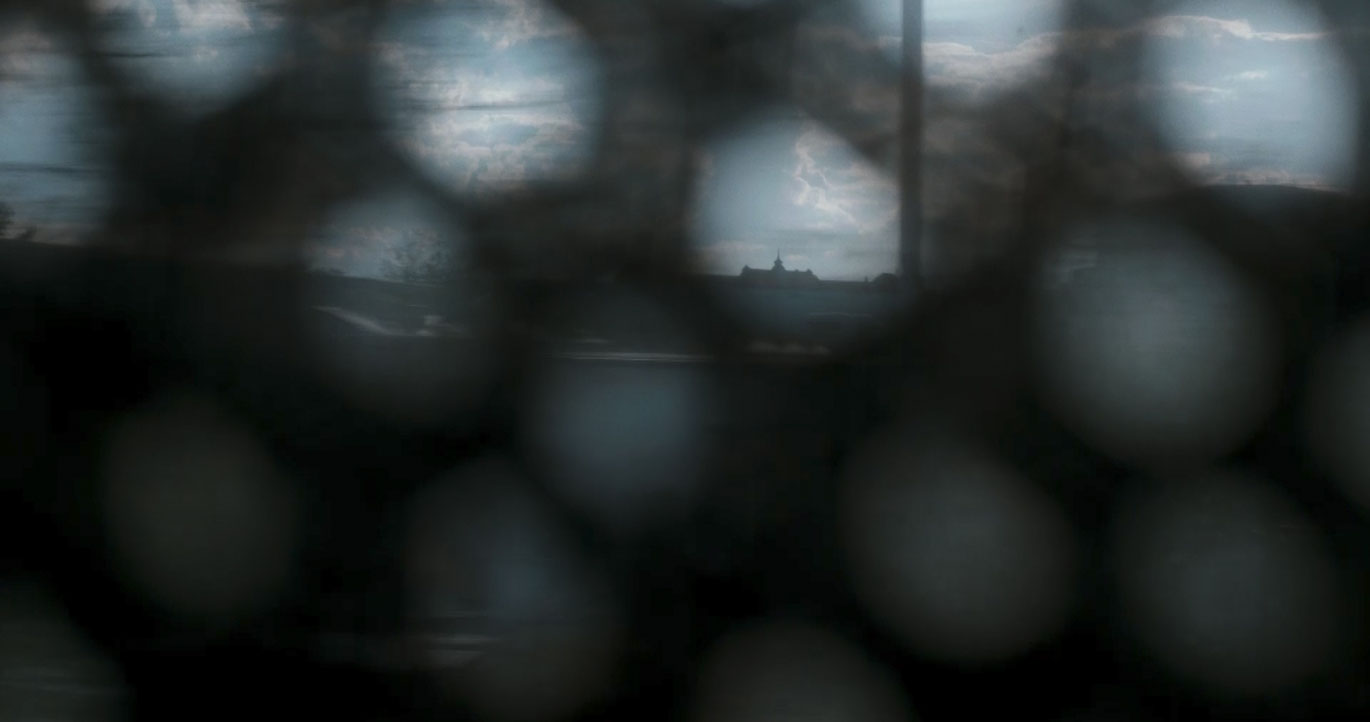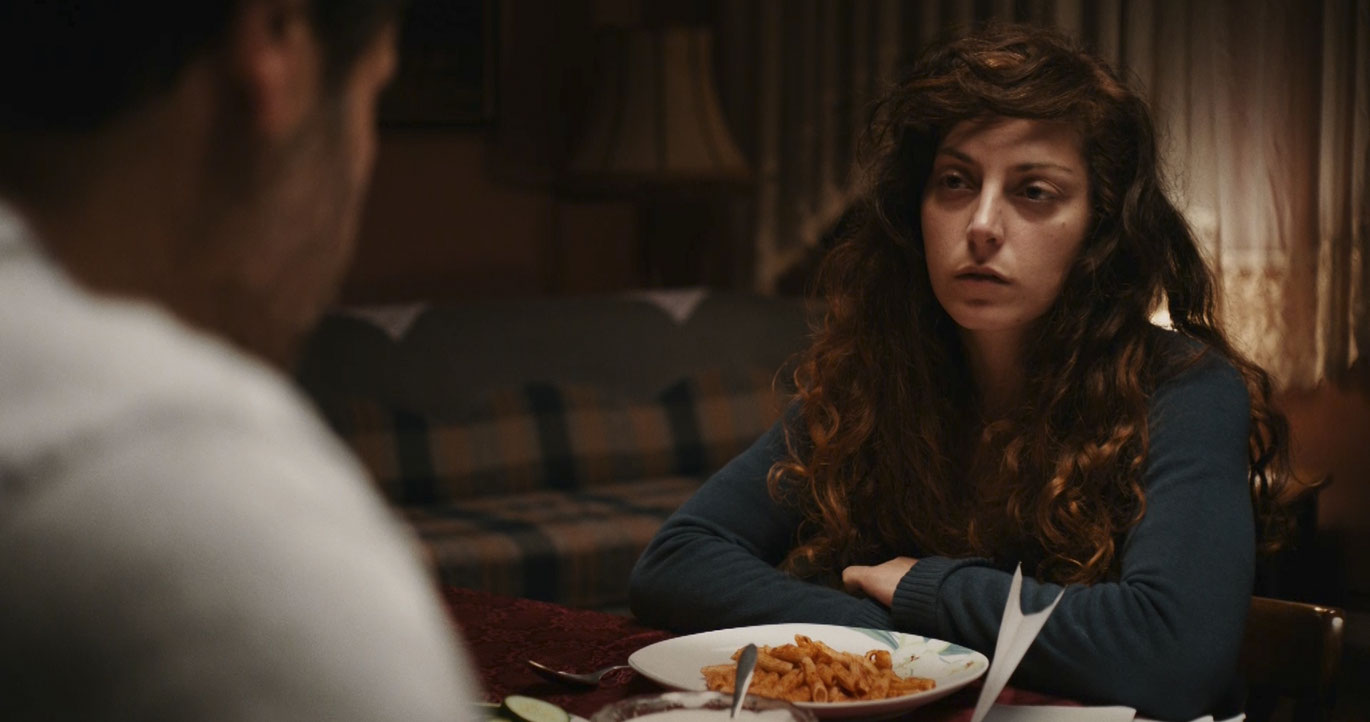Sevince
One sees shadows, flickering dots of light, silhouettes, a bit of green, some blue, but actually one sees almost nothing. The perception of the world from the window of a traveling train through the eye grid of a burqa; the first scene of Sevince/Wenn man liebt offers an impression of that, but only a fleeting one. Soon one sees the wearer herself in the black garment that she has complemented with gloves. She first throws off the veil when she has unlocked the door to her home; underneath we see a surprisingly unruly head of hair, a breezy summer dress, and a mouth with red lipstick. All of that disappears in lieu of a loose fitting, low-key housedress. While she is changing, keeping her child occupied, and starting to cook, Peri smiles silently. But when her husband, who does not look at all unfriendly, comes home, she turns serious. One might guess that the young woman has a secret.
The fact that the veil can hide much more than the hair, body, and face of its bearer; that it might perhaps open up possibilities entirely contrary to its actual purpose, is what Sevince tells of. It is a film about identity and conformity, one´s own and other´s expectations of gender roles. Morals, sins, and the need for freedom, which in Peri´s case are in conflict with one another. Süheyla Schwenk´s minimal dialogue film is nearly a chamber play: the limited sets match the protagonist´s limited freedom of action, which, who knows, might soon broaden. (Daniela Sannwald)
Translation: Lisa Rosenblatt
Sevince
2016
Germany
30 min



